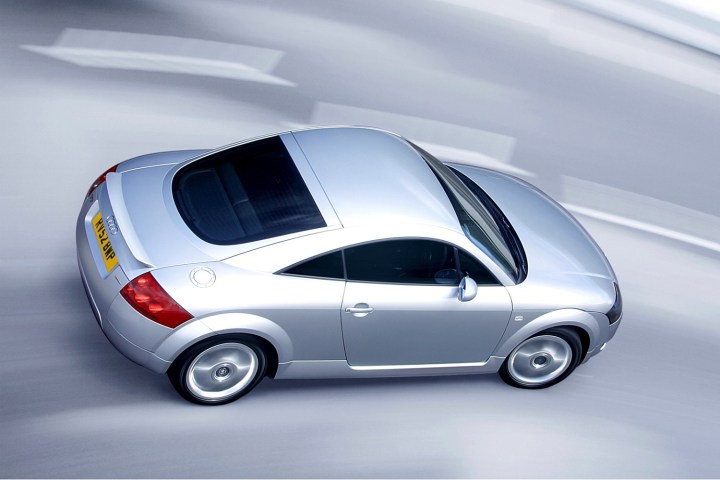
While it’s difficult to pin down exactly what makes a car beautiful and what doesn’t, we can’t deny some models end up associated with the term far more often than others. Here are some of our picks for the honor of being named the most beautiful cars ever made.
Chevrolet Corvette (first generation)

The original Chevrolet Corvette deserves its own chapter in the book of automotive design history. Introduced in 1953, it drew inspiration from the EX-122 show car displayed at New York’s Waldorf-Astoria hotel as part of the General Motors Motorama. Chevrolet essentially brought a concept car to production, a bold move in any era.
An under-powered six-cylinder engine and a shockingly bad build quality caused the first Corvette to fall flat on its face. No one criticized its design, though, and it’s safe to say handsome looks helped the ‘Vette survive its first few years on the market.
Cadillac Sedan de Ville (first generation)

Cadillac was the gold standard in the luxury car segment during the 1950s. You had it made if you drove a 1959 Sedan de Ville, and its ostentatious design ensured everyone knew what they were looking at. From its chrome grille wider than a parking spot to tail fins that could double as harpoons, the Sedan de Ville stood apart from every other luxury sedan on the planet. Cadillac has toned it down in recent years, but look closely at some of the brand’s most recent cars and you’ll see references to the glorious fins.
Ferrari Dino 206GT/246GT

Affectionately called the baby Ferrari, the Dino 246 GT received a transversally-mounted V6 installed right behind the passenger compartment. The mid-engined layout required a relatively long wheelbase, so designers used long, flowing flying buttresses to even out the proportions. The result was design magic, and the 246 GT inspired an entire generation of mid-engined supercars. Rumors indicate it will inspire a successor, too, but nothing is official yet.
Alfa Romeo Duetto

We dare you to find a more pure expression of Italian automotive design than the original, Pininfarina-styled Alfa Romeo Duetto launched in 1966. Its soft edges earned it the nickname osso di seppia, which means “cuttlefish bone” in Italian. Take a glance at the red example driven by Dustin Hoffman in The Graduate and you’ll see why. The Duetto morphed into the Spider, a mainstay of the Alfa Romeo line-up for decades.
Toyota 2000GT

No one expected Toyota to come out with a world-class sports car in the 1960s, let alone one even half as gorgeous as the 2000GT. It wore the typical long hood and short decklid proportions of a front-engined, rear-wheel drive coupe. Its design was characterized by a low front end with lights under glass covers and a sloping roof line that transitioned into a hatch before flowing into a squared-off tail.
The 2000 GT remains one of the most beautiful Toyotas ever built. It has also become one of the most sought-after Japanese cars and, consequently, one of the most expensive.
AC Cobra

The original AC Cobra didn’t need an intricately-styled body because it was all about performance, not design. Its lines were pure and simple, yet they exuded power. And while it never grew into the Corvette-fighting model Carroll Shelby and Ford envisioned, it became a legend in its own right by dominating race tracks on both sides of the pond.
The functional lines have remained almost unchanged over the course of the Cobra’s unusually long production run. They’ve held up so well that Shelby still builds the Cobra, though it now carries a supercar-like price tag. The roadster has also inspired countless replicas based on a dizzying array of vehicles. We’ve even seen Cobra knock-offs built on rear-engined Volkswagen platforms. Talk about all show and no go!
Lamborghini Miura

The Miura quieted naysayers who claimed Lamborghini would never beat Ferrari. Its low-slung silhouette with sleek, subtle accent lines wooed enthusiasts who attended the car’s unveiling at the 1966 Geneva Auto Show. Its mid-mounted V12 made it a technical masterpiece, turning the Miura into the jack of all trades in the grand tourer segment. It took rivals years to catch up.
Mercedes-Benz w124

We know, we know; we’re not going to reach a consensus among readers by including the Mercedes-Benz w124 on this list, but hear us out. The w124 remains one of the most timeless sedans ever to wear the famed three-pointed star emblem. Its elegantly understated lines have aged gracefully over the past three decades, and its proportions remain as spot-on as ever. Roll up to the Ritz in one today and you’ll still hear people whispering “damn, he’s in a Benz.” It’s like going to prom with Julia Roberts.
Alfa Romeo Giulia

Alfa Romeo’s newest Giulia is a breath of fresh air in an era when sheet metal is all too often finned, vented, and tortured by a bevy of incongruous angles. The Giulia admirably channels the brand’s heritage without the slightest retro styling cue, and it fits into the compact sports sedan mold without copying the Germans who rule the roost. Given the chance, we’d muster up our best Italian accent and tell the designers “bravo, é bellissima!”
Audi TT (first generation)

Audi’s design department hit a home run with the original TT. It left the competition completely flabbergasted, sending rivals on a desperate search for anything to counter the crisp, Bauhaus-inspired lines. The available baseball glove upholstery made it beautiful on the inside, too. The second-generation model lost some of its predecessor’s charm, but Audi got its mojo back with the latest TT.



